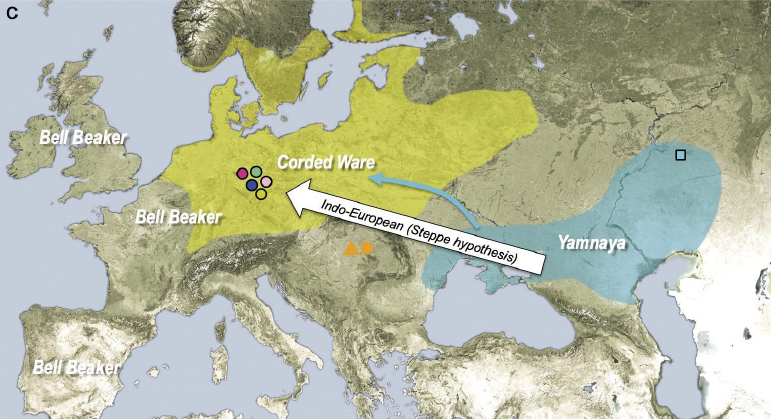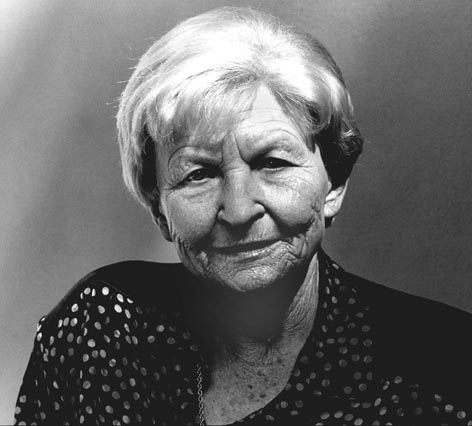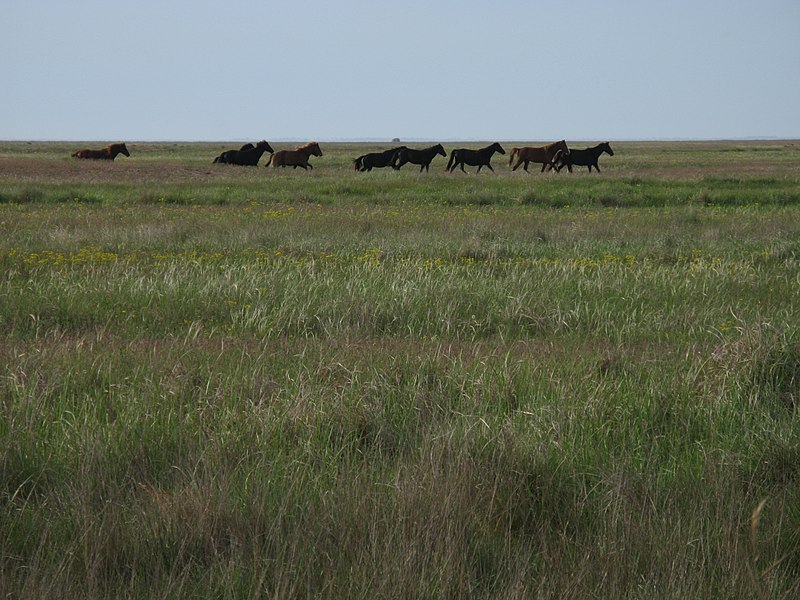In the last two posts, I’ve tried to sketch out a plausible picture of when and where Common Indo-European might have been spoken, with a few hints about the cultures of the people or peoples who spoke those early dialects. In time, we’re looking at a window of maybe between 4000 and 3000 BC, and in place, the Pontic-Caspians Steppes seem like a reasonable guess. This roughly aligns things with a set of archaeological complexes known (at least in the later part of this time period) as the Yamnaya.
 Much of this post is on what was once called the Kurgan Hypothesis.
Much of this post is on what was once called the Kurgan Hypothesis.
The big question remaining is how, or why. What kind of events led to the Indo-European languages spreading so far and wide – from India to Europe – at such relatively early dates? Potentially this is an enormous question, and one hotly debated in current scholarship, so I’m just going to focus in on one relatively specific (though still major) part of the issue: how might the European dialects, such as Germanic, Balto-Slavic, Italic, and Celtic, have spread westward from the Steppes (assuming that a Steppe origin is broadly correct)?
One way to approach to question is through archaeology. Starting around 3300 BC (the beginning of the Yamnaya period proper on the Steppes), there were some major changes in southeastern Europe, especially around the lower parts of the Danube river valley. The cultures that had been there are broadly referred to as ‘Old Europe’ – this is an umbrella term, cover a number of archaeological cultures over several millennia, but broadly speaking it’s marked by being very agrarian (in contrast to Steppe pastoralism), and featuring substantial towns or small cities, some home to tens of thousands of people.
 Some cultures of Old Europe.
Some cultures of Old Europe.
The relevant one for this post is the Cucuteni-Tripolye, in blue in the upper-right (but I've tried not to throw around too many archaeological culture names).
Many of these cities were eventually abandoned in the centuries after 3300 BC, some slowly, some possibly very quickly, and burial customs that had earlier been common on the Steppes started to show up. Archaeology alone doesn’t tell us exactly what’s going on with all this, of course, but it’s a reasonable supposition that these upheavals in this part of Old Europe were connected to the rise of the Yamnaya patterns to the east.
Another way to tackle the question is through population genetics. This is difficult work to do. Earlier research tried to make inferences based on DNA analyses of modern populations, but this kind of data is so far removed from these early periods that it’s really not very useful. More recently – really in just the past few years – people have started to use DNA from ancient human remains – this is called aDNA (‘ancient DNA’), and is having such a major impact on our understanding of early population dynamics that people are already talking about the archaeogenetic revolution as a watershed the study of prehistory.
 It seems that the genetic determinants for lactose tolerance were introduced into Europe from the Steppe.
It seems that the genetic determinants for lactose tolerance were introduced into Europe from the Steppe.
In this case, aDNA studies suggest that there was a substantial population movement from the Steppes into Europe at very roughly around the same time window as these archaeological changes are taking place. These findings shouldn’t be over-interpreted in any simplistic way. The genetic profiles of both the Steppes and Old Europe showed internal variation even before this, and it’s very clear there wasn’t anything like a total population replacement in most of Europe. One of the major genetic determinants for blue eyes, for instance, seems to come from the earlier populations in Europe, while the determinants for lactose tolerance seem to be attributable more to Steppe influence (which perhaps fits with the prominence of dairy products in the Indo-European vocabulary).
If we put the archaeological and genetic pieces together, the picture maybe looks a little like this: in the late 3000s BC, there was a major cultural change in the western Steppes, which saw the expansion of many people from that area further west, into the Danube basin and later on further into other parts of Europe. These pastoralists moved in large numbers, but didn’t completely replace the earlier populations either. Culturally, they brought in new burial customs and animal husbandry practices, but Europe continued to rely heavily on agrarian farming.
 Simplified map showing the basic idea (from Haak et al. 2015, page 12 in the PDF).
Simplified map showing the basic idea (from Haak et al. 2015, page 12 in the PDF).
As implied here, the so-called Corded Ware archaeological cultures (which cover a huge area) are often seen as the result of the contact of Indo-European and older European traditions.
If we add language to the mix, we get the speculative but plausible hypothesis that people from the Steppes brought dialects of Common Indo-European from there into Europe. It may of course have taken a very long time for early Indo-European to fully replace the earlier languages of Europe (something I’ll get into more in the next post), and what kinds of multilingualism and language shifts took place in these centuries is something we can only guess at pretty vaguely. The ‘Yamnaya’ themselves may not even have had one single language to start with, and it’s at least possible that Indo-European was just the lucky language from several, the one that happened to win out in the end and get spread around to other regions. The idea isn’t to propose any kind of neat one-to-one match between archaeology, genes, and language (such tidy correlations are unrealistic for creatures as chaotic as humans), but that the impact of the Steppes on Europe after 3300 BC was a major (pre)historic chain of events, and that the westward spread of the Indo-European languages slots pretty comfortably into the context of these tumultuous happenings.
Still, even if all this is right, the really basic question of why remains hanging over our heads. Why did all this take place, and what did the spread of Indo-European look like on the ground? Fundamentally we don’t know for sure, and probably never will, but I want to spend the rest of this post looking at a couple of the major answers scholars (mostly archaeologists) have proposed over the years.
 Marija Gimbutienė (usually anglicized to Gimbutas), a major developer of the Steppe Hypothesis in the 20th c.
Marija Gimbutienė (usually anglicized to Gimbutas), a major developer of the Steppe Hypothesis in the 20th c.
In modern scholarship, idea of looking to the Yamnaya for Indo-European goes back to Marija Gimbutas (though she concentrated on a slightly earlier crisis in parts of Old Europe around 4000 BC). This influential scholar described the interactions between ‘Old Europe’ and the ‘Indo-Europeans’ in stark and dramatic terms:
[T]he European continent hosted a flourishing group of Goddess worshipping cultures...
[Within a couple of centuries], the Golden Age of Old Europe in the Danube basin came to an end. The continuity and fabric of Old European society was torn. Many of the thriving settlements, inhabited for hundreds or over a thousand years, were abandoned...
At some sites, the change was dramatic, the cities being abandoned and never reoccupied. At other sites, the change is more ominous: burnt layers attest to fire and destruction and even massacres of people... At still other sites the change is more gradual, the Old European traditions taking centuries to change...
The beautiful Old European artistic tradition vanished. The quality of workmanship declined, coarser clays and poorer firing techniques being employed...
The drastic changes that took place in Europe after 4500 BC can be explained by influence from the outside and the imposition of a foreign culture's belief system and politics. The sudden upheavals in central Europe can only be understood by looking further east, to homelands of another, completely different culture. (Gimbutas 1997, pages 351-352)
This ‘foreign culture’ she refers to are the Steppe cultures, including the immediate precursors of the Yamnaya. Gimbutas calls these Kurgan Cultures – the Yamnaya would be a later phase of ‘Kurgan Culture’ in this terminology. Kurgans are the burial mounds that formed a distinctive part of the funerary customs of this area. For Gimbutas, ‘Old European’ and ‘Kurgan’ cultures were the ‘antithesis’ of each other (her term; Gimbutas 1977, reprinted in 1997, p. 198). While Gimbutas generally saw the ‘Kurgan peoples’ as more inherently warlike, she identified the domestication of the horse as the key event that gave them the increased military capacity to begin an uncoordinated destruction and conquest of ‘Old Europe’. As she puts it: ‘The warrior mounted on horseback could sweep out of the plains with no warning, attack, and then ride back into the steppes.’ (1997, p. 357)

A real kurgan will probably not behead you, since it is a burial mound.
Ipatovo Kurgan, used in successive phases from perhaps 3600 BC. The main construction is from the 2000s BC.
(From Belinkskij et al. 2000, p. 774.)
There’s a strikingly ideological tone to much of Gimbutas’s writing, especially her later works, and the use of romantic language like ‘sweep out of the plains’ has maybe not helped the reputability of her theories. Even those scholars who have built directly on her foundation have abandoned terms like ‘Kurgan Cultures’, hoping to shed some of the more lurid associations that have grown up around this label over the years.
The potential social models for the spread of Steppe culture (and with it, perhaps, Indo-European), have also grown more nuanced. War, including horse-based warfare, probably played a role, but there’s also potentially much more to the story: the geography of the Steppes as a kind of Eurasian ‘superhighway’ (especially exploitable if you’ve got things like horses and wheeled vehicles), or the ability to quickly gain wealth and prestige through cattle breeding (a few good years can let someone increase their herds substantially, if they have the fodder to support them – searching for new pastures being a potential reason to move to new places).
 Horses moving around on the Pontic-Caspian Steppe. Note the lack of regular obstacles.
Horses moving around on the Pontic-Caspian Steppe. Note the lack of regular obstacles.
David Anthony – in many ways a successor to Gimbutas – epitomizes these shifts in perspective in his rather different summary of the early spread of Indo-European (2007, p. 343):
Wealth, military power, and a more productive herding system probably brought prestige and power to the identities associated with Proto-Indo-European dialects after 3300 BCE. The guest-host institution extended the protections of oath-bound obligations to new social groups. An Indo-European-speaking patron could accept and integrate outsiders as clients without shaming them or assigning them permanently to submissive roles, as long as they conducted the sacrifices properly. Praise poetry at public feasts encouraged patrons to be generous, and validated the language of the songs as a vehicle for communicating with the gods who regulated everything. All these factors taken together suggest that the spread of Proto-Indo-European probably was more like a franchising operation than an invasion. Although the initial penetration of a new region (or “market” in the franchising metaphor) often involved an actual migration from the steppes and military confrontations, once it began to reproduce new patron-client agreements (franchises) its connection to the original steppe immigrants became genetically remote, whereas the myths, rituals, and institutions that maintained the system were reproduced down the generations.
Anthony gives a lot of attention to social and ideological aspects of culture, including something often called the ‘guest-host institution’. This is reconstructed both from later cultural practice and etymology.
Culturally, we find guest-host relationships depicted fairly often in the recorded literatures in Indo-European languages – all of which obviously comes from much later dates. For instance, in the Odyssey the young Telemachus decides to go searching for his missing father Odysseus, who’s been absentee for basically Telemachus’s whole life. The first thing he does is set out for a place called Pylos, where he hopes the old king there, Nestor, might have word of his father. When Telemachus arrives, he’s welcomed warmly:
When they saw the strangers coming,
they all stood up with open arms to greet them,
inviting them to join them. Nestor’s son,
Pisistratus, shook hands and sat them down,
spreading soft fleeces on the sand beside
his father and his brother, Thrasymedes. (Odyssey Book 3, lines 34-39; trans. Wilson, p. 136)
Strikingly, all of this is done before Telemachus has introduced himself. Only after being offered food and toasting the gods did Nestor starting make his inquiries:
“Now that our guests are satisfied with food,
time now to talk to them and ask them questions.
Strangers, who are you? Where did you sail from?
Are you on business, or just scouting round
like pirates on the sea, who risk their lives
to ravage foreign homes?” (Book 3, lines 69-74; Wilson, p. 137)
This goes beyond just a simple generalized hospitality. Once Telemachus introduces himself, he’s greeted even more warmly, and when he leaves, Pisistratus (one of the sons of Nestor) goes with him. They’ve known each other for all of an evening, but the relations of friendship that had earlier existed between Nestor and Odysseus are expected to transfer on to the next generation.
 Telemachus and his inherited friend Pisistratus saying goodbye to Nestor.
Telemachus and his inherited friend Pisistratus saying goodbye to Nestor.
(Illustration by Henry Howard)
This kind of idea is not limited to one scene from the Odyssey: it’s pervasive in Greek literature, and has close echoes in other narratives in Indo-European languages (the Sagas of Icelanders are particularly rich in examples).
It’s always a bit hard to know what to do with later evidence from literary or mythological texts – it’s generally much less reliable than linguistic evidence. But in this case, the guest-host relationship seems supported by the etymology of guest-host itself. Guest goes back to Proto-Germanic *gastiz ‘guest, stranger’, and has exact cognates in Old Slavic gostĭ ‘guest’ and Latin hostis ‘enemy, stranger’ (think host-ile; this hints at the potential for suspicion and conflict, rather than friendship and hospitality). Host is from the same root as well, via French from Latin hospes. This is an old compound word (also found in Slavic), from *hosti-potis – the *hosti part is cognate with ‘guest’, while the *-potis part means ‘lord’. Together, guest and host to speak to two sides of the same relationship: the guest or visiting stranger, and the host or person who is obligated to receive them and offer them hospitality.
Putting the pieces together, both the word *gʰóstis and the portrayals in later literature, it’s not hard to arrive at the kind of idea that Anthony outlines. It’s easy to see how such a system would help maintain and extend social systems across large areas, and potentially help assimilate new people into Indo-European-speaking social networks.
 The name Xena is adapted from Greek xénos ‘guest, stranger’ or xenía ‘hospitality, the guest-host principle’.
The name Xena is adapted from Greek xénos ‘guest, stranger’ or xenía ‘hospitality, the guest-host principle’.
So just what did the entry of these Indo-European dialects into Europe look like? We can’t really know in detail – the evidence just doesn’t exist – and the kinds of dynamics suggested by archaeologists are firmly in the realm of plausible speculation rather than being robustly certain. But however it happened, it seems likely that in the centuries following 3300 BC or so, Europe saw a major transformation: a large number of people from the Steppes physically moved west, bringing with them new material culture elements and, plausibly, a new language (or group of closely related dialects). These things did not totally displace the existing European cultures or populations, but combined with them, creating the new contexts that would see the later development of the Germanic languages.
Further Reading
Once again, Anthony’s book takes centre stage here, in particular chapter 14 on ‘The Western Indo-European Languages’ (and, on the earlier events that Gimbutas places so much emphasis on, chapter 11, ‘The End of Old Europe and the Rise of the Steppe’). Gimbutas’s publications on these issues span many decades, but a lot of them are conveniently collected in the posthumous collection The Kurgan Culture and the Indo-Europeanization of Europe.
In the past few years, scholarship on this question has been dominated by what’s now called the ‘Archaeogenetic Revolution’, using ‘ancient DNA’ to make inferences about prehistoric population movements. Two studies in 2015, one by Allentoft et al., the other by Haak et al., used this technique to suggest a very significant movement of people from the Steppes into Europe during the 2000s BC. This has been fairly widely taken as making the transmission of Indo-European dialects into Europe at the same time more plausible, though it’s also led to some overly simplistic equations of genes, culture, and language – some wise cautions against this are given by Volker Heyd in his 2017 article ‘Kossinna’s smile’. (Kossinna was an explicitly racist and nationalist German archaeologist in the earlier twentieth century, whose broad-brush methodologies and close linking of prehistoric arguments with modern political and ideological concerns have cast a long shadow in archaeology.)
In the same journal issue as Heyd’s piece there’s an important contribution by Kristjansen et al. focusing not on the fact of population movements, but the archaeological dynamics and consequences of it: this paper in particular raises difficult but important questions about the extent of violence as part of these ‘migrations’ (I've tended to avoid terms like this, since to me their uses in the modern day colour them too much to be very useful for prehistory). Gimbutas had portrayed the spread of Indo-European as primarily a violent and war-driven operation, while Anthony is at pains to distance himself from this: ‘more like a franchising operation than an invasion’ (though he elsewhere is clear that he doesn’t think all this could have been quite as bloodless as the bit I’ve quoted makes out) – violence is hard to talk about fairly, and I expect this discussion will not be settled any time soon.
In a recent draft paper, John Koch attempts a much more wide-ranging synthesis of genetic, archaeological, and linguistic information. For the history of English, the most interesting suggestion is his proposal that Germanic properly belongs to a group of then slightly more easterly dialects including Balto-Slavic and Indo-Iranic (which had not yet headed off further east and south), but was later reoriented towards the more westerly Italo-Celtic at a very early date. This is extraordinarily speculative, but interesting if correct – the idea that Germanic is something of a ‘bridge’ dialect between Italic/Celtic on the ond hand and Balto-Slavic (at least, and maybe also Indo-Iranic) on the other is certainly at least broadly plausible, and fits with the historical geography of where we find these languages later on.

Koch’s proposed map of the early spread of Common Indo-European (what he calls PIE2, which is Indo-European after the split with Anatolian).
On the Archaeogenetic Revolution in prehistory in general (not just the rather narrow Indo-European question), see Robert Reich’s Who We Are and How We Got Here.
On guest specifically, it’s exact earlier etymology and derivation are debated. All of the clear cognates are actually from the European dialects, though literary evidence for the ‘guest-host institution’ is more widespread. One question is whether Greek ksénos is related to it (taking *gʰós-tis as a derivative of a root *gʰes-, and then seeing ks-én-(w)os as beginning with a reduced ablaut grade of this same root: *gʰs-en-), though it’s possible that the Greek word is non-Indo-European in origin. A recent attempt to tackle the derivation of *gʰóstis is Garnier’s ‘Le nom indo-européen de l'hôte’. Émile Benveniste has an extensive discussion of the social/cultural side of the guest-host relationship in chapter 7 of his book (mentioned in the previous post).
As a final note, I just want to acknowledge that while ‘Europe’ is a rather fuzzy thing, most geographical definitions do include most of the Pontic-Caspian Steppe within Europe. I've contrasted the two mainly for rhetorical convenience. It's rather anachronistic to be dividing things up according to modern geopolitical units at all, anyway (rather than, say, archaeological cultural zones), and the point is just to give a moderately helpful idea of the places in question (which is part of why I keep peppering these posts with endless tidal waves of maps).
Previously: Cow
Next up: Seed



